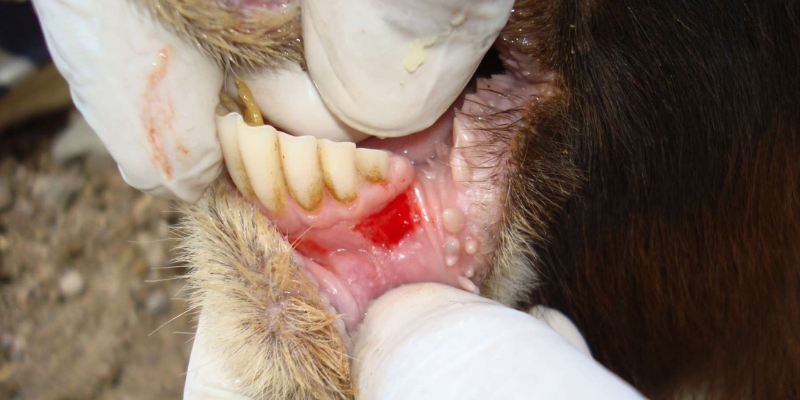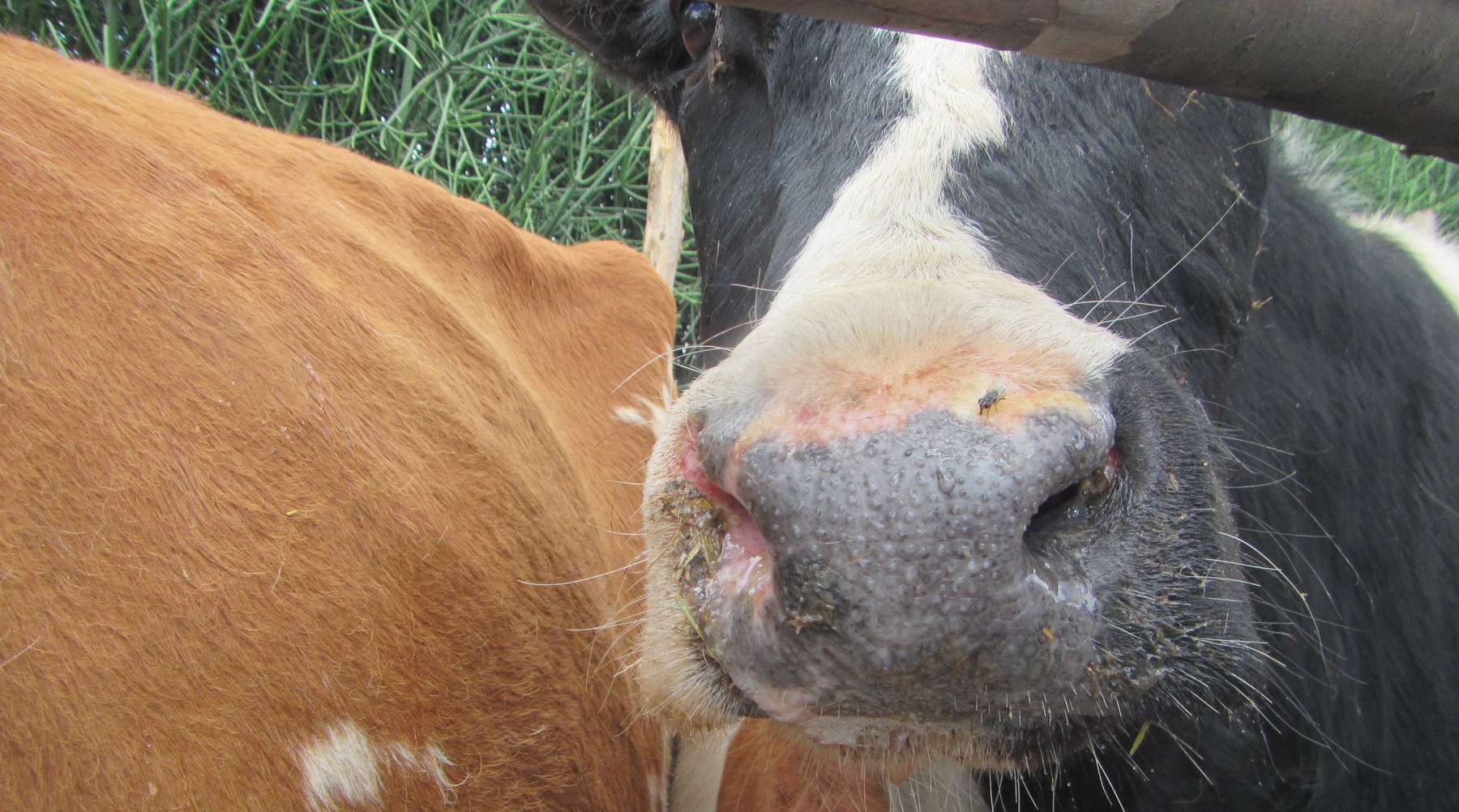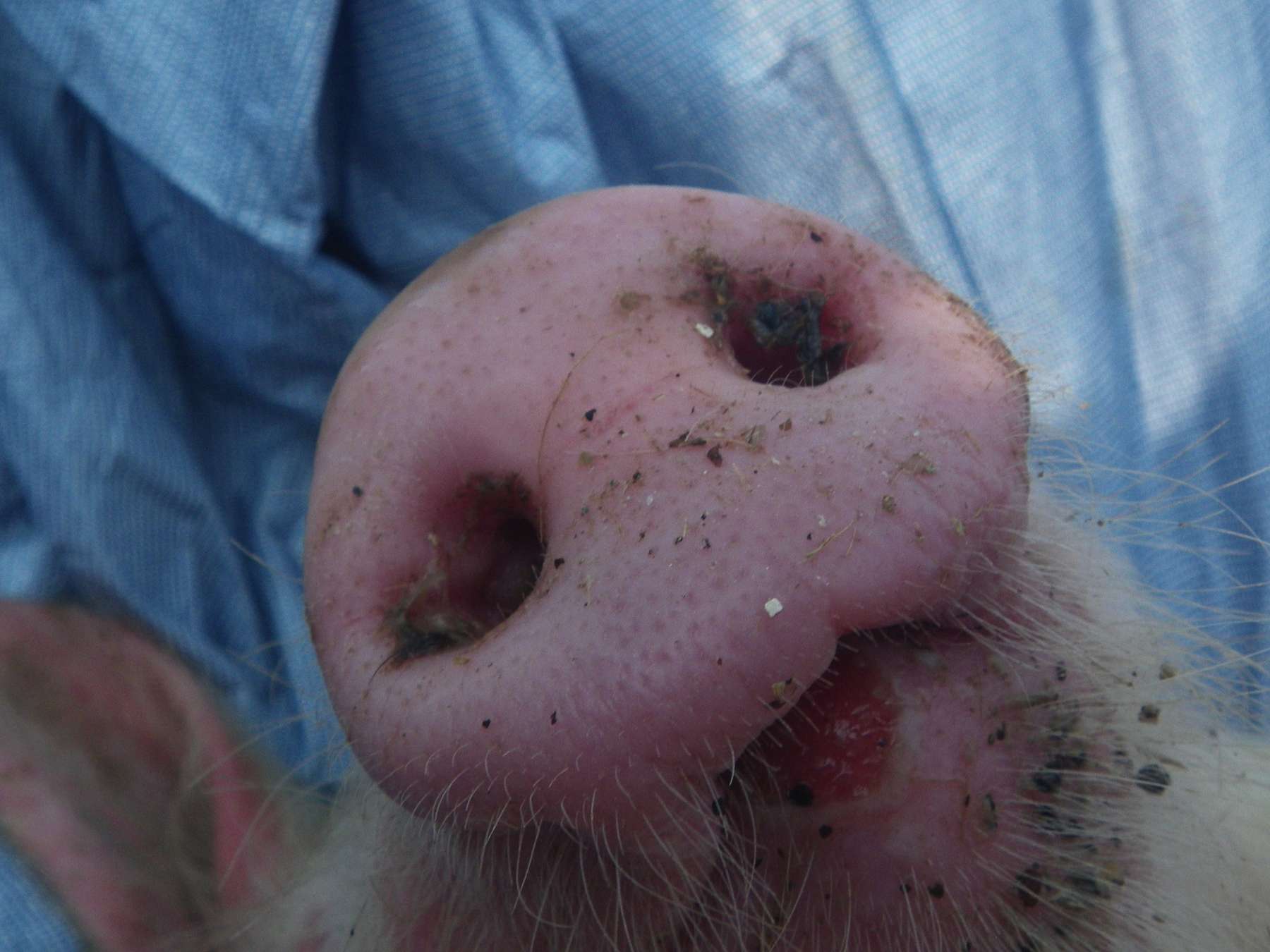02/04/2025
Foot-and-mouth disease
Since the current outbreak is already taking place directly on the Austrian border, an urgent appeal is made to livestock farms in Austria to pay the utmost attention to operational biosecurity measures and the highest hygiene standards - especially at stable entrances, animal purchases and transport.

Typical lesions in the mouth. © eufmd/fast
In Hungary and Slovakia, cases of the highly contagious foot-and-mouth disease (FMD) have been confirmed in livestock on several farms, including those directly on the Austrian border. Several thousand cattle on the farms affected by the outbreak had to be culled, but pigs, sheep, goats, and other cloven-hoofed animals can also be affected. There is currently no indication that the disease has been introduced into Austria. However, the risk of introduction into Austria is considered high. Introduction into Austria would cause massive economic damage to domestic agriculture and must therefore be prevented at all costs. Important: Foot-and-mouth disease does not pose a threat to humans.
Prevent introduction - hygiene is paramount
Important biosecurity measures to prevent the introduction into the farm include:
- Establishment of a hygiene lock with washing facilities (soap, disinfectant)
- Prevent access by persons outside the company or only with company clothing or protective clothing (overalls, boots, gloves, hood) -> The attending veterinarian must definitely purchase his/her own boots and (disposable) clothing, which are only to be used on the company's own premises
- Strict quarantine measures for purchased animals (at least four to six weeks) including strict separation of used clothing, boots, items for quarantine animals and the regular animal population
- Purchasing animals only from known stocks with assured health status
- Call for vigilance
- The import of field fodder and bedding material is strongly discouraged!
- The import of manure or slurry from Slovakia and Hungary is prohibited!

Transmission
Foot-and-mouth disease is a highly contagious viral disease that exclusively affects ungulates, including cattle, pigs, goats, sheep, and buffalo. The pathogen spreads through direct animal contact as well as contaminated products, excreta, and objects. The virus can be spread several kilometers by wind. The virus survives for up to 15 weeks in feed and wastewater and for several years in frozen meat.
© eufmd/fast
Symptoms: How do I recognize foot-and-mouth disease?
The incubation period is two to seven days. Usually, the entire herd is affected—the virus is extremely contagious. If suspicious symptoms occur, it is imperative to consult a veterinarian, who will conduct appropriate sampling. There is no charge for the animal owners for laboratory testing. To contain the disease, it is extremely important to detect the disease on the farm as early as possible and prevent further spread.
General symptoms in all affected animal species
- Blisters in the mouth area (inner lips, tongue, gums), on the udder (teat, resistance to milking equipment) and on the hooves (interdigital space, coronary band)
- Lack of movement, tripping, slow getting up
- Animals salivate and show reduced appetite
- Fever (40 to 42 °C)
- Pains
- apathy
Other symptoms in cattle
- Dairy cows: decline in milk production
- High mortality rate among calves (up to 75 percent)
Other symptoms in pigs
- Changes in the claw/extremity area very severe – removal of shoes possible
- Deaths in piglets without clinical symptoms possible
Other symptoms in sheep
- Symptoms very inconspicuous
- Lameness is usually the only clinical manifestation

Combating
Foot-and-mouth disease is a notifiable animal disease. Control focuses on the identification, isolation, and culling of affected animals, as well as on controlling animal movement to prevent the spread of the pathogen. Any suspected cases must be reported to the official veterinarian. Treatment of infected animals is prohibited. All susceptible animals on affected farms must be culled, and extensive cleaning and disinfection measures must be implemented to prevent further spread. Foot-and-mouth disease last occurred in Austria in 1981.
Typical lesions in pigs. © eufmd/fast
Official measures in the event of an outbreak in a company
- Closure of the affected company
- Culling of all susceptible animals on the infected farm
- Safe disposal of animal carcasses as well as cleaning and disinfection
- Establishment of a protection zone (minimum radius of three kilometers around the infected farm) and a surveillance zone (minimum radius of ten kilometers around the infected farm)
- Trade restrictions
Protection and surveillance zones
In the event of a positive detection of foot-and-mouth disease on a holding in Austria, protection and surveillance zones must be established, which will remain in place for at least 21 and 30 days, respectively, from the initial cleaning and disinfection of the outbreak-affected holding. Within these zones, all holdings with susceptible animals must be subject to official inspections, and strict restrictions on trade in live animals and animal products must apply.
Note: Currently (as of April 2, 2025) there is a freeze on acceptance in the following districts:
- Eisenstadt, Neusiedl/See, Mattersburg, Oberpullendorf
- Gänserndorf, Mistelbach, Neunkirchen, Wr. Neustadt, Baden, Bruck/L., Mödling, Schwechat
Due to the current risk situation, the acceptance ban will be extended to the whole of Austria starting Thursday, April 3rd at midnight.
Information on compensation in the event of an epidemic
Pet insurance
Compensation benefits in the event of foot-and-mouth disease are available through livestock insurance and livestock income loss insurance for cattle, pigs, sheep, and goats, depending on the insurance provider (e.g., Austrian Hail Insurance, R+V Allgemeine Versicherung) and the insurance product purchased. For more information, please contact your advisor. Livestock insurance generally covers losses related to the disease that are not officially covered. These include, for example, limited marketing opportunities (e.g., no suppliers or buyers) in protection and surveillance zones.
In any case, it is advisable to take out appropriate pet insurance in regions outside of the official restricted zones, even if certain waiting periods for the insurance cover to take effect must be expected.
Current information from hail insurance: New participants in the yield loss insurance for cattle, pigs, sheep, and goats are available until midnight on April 2nd. Insurance coverage takes effect after 60 days.
Animal Health Act
If the animal population is officially culled, compensation is paid by the federal government in accordance with the Animal Health Act.
How are losses of livestock and property compensated? Section 57
If animals must be culled by official order or die due to an epidemic after proper notification to the authorities, they will be compensated from federal funds. Compensation is provided in accordance with the Animal Diseases Act Value-Based Tariff Ordinance. Compensation is also available for objects, feed, and products of animal origin that were damaged or destroyed during officially ordered disinfection. However, compensation is not available if the business owner himself contributed to the spread of the disease through unlawful conduct.
Who bears the costs of entrepreneurs in the event of a (potential) epidemic? Section 66
In principle, the direct costs incurred by operators in the event of official measures are covered by the federal or state governments. These range from compensation for killed/dead animals, costs for the euthanasia and disposal of carcasses and products, official submissions and laboratory tests, to cleaning and disinfection as part of disease control measures.
Indirect economic losses (e.g., price declines or losses due to vacant stables) and exceptionally high animal values are not covered by the sovereign; in these cases, entrepreneurs are recommended to seek private insurance (e.g., insurance).
Entrepreneurs themselves must pay for measures to obtain freedoms recognized by their individual businesses, measures to make use of exemptions from restrictions on movement of goods, and measures to obtain other trade-relevant advantages for their businesses.
Who bears the costs of investigations? Section 68
Costs for the investigation of suspected cases are covered and do not have to be borne by the farm.
